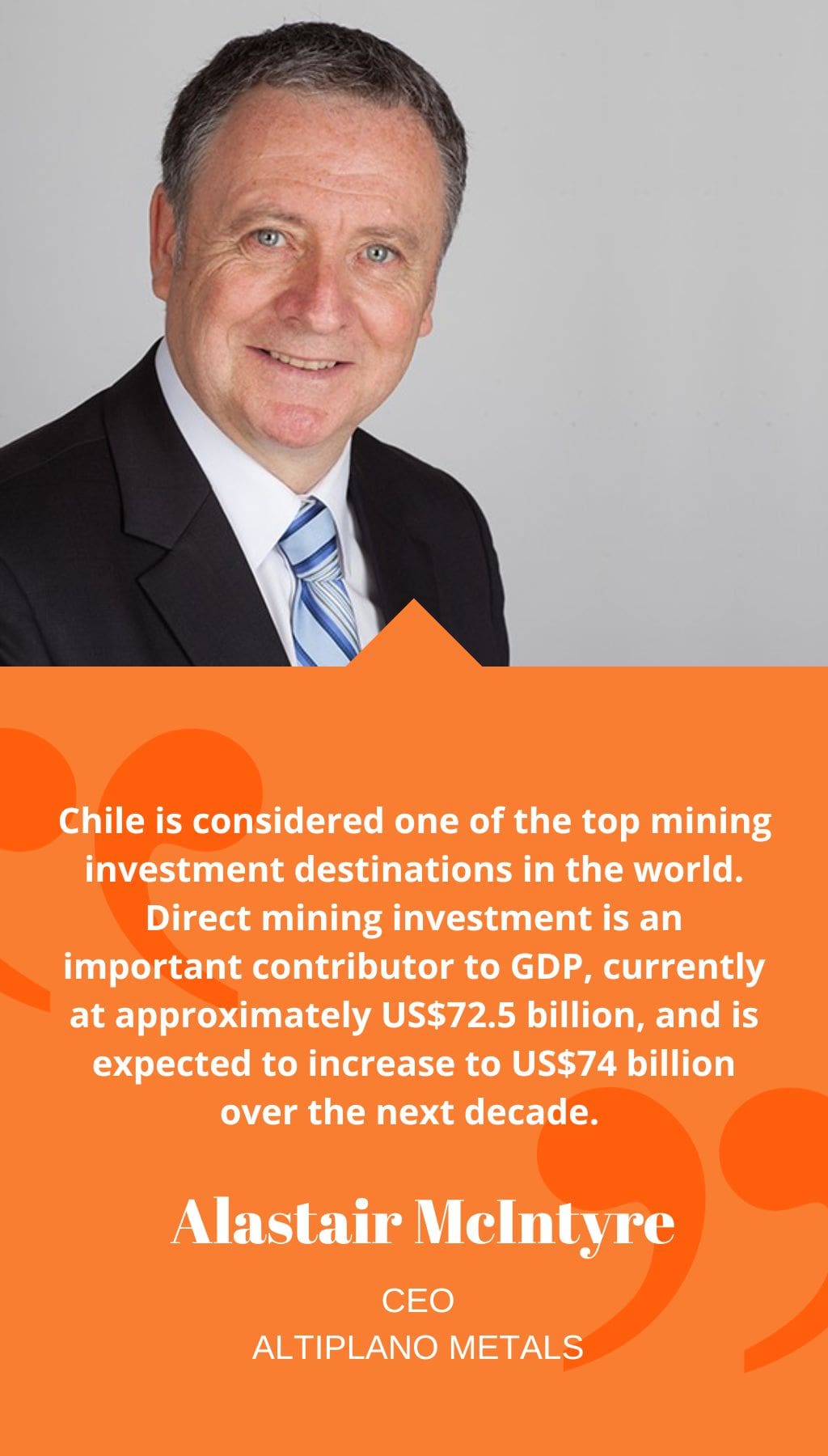
- Chile | 24 April 2022

Can you describe how Altiplano’s business model is unique among junior mining companies?
Altiplano has a unique business model that sets us apart from other junior mining companies. Our model involves acquiring and developing a portfolio of near-term production assets combined with quality, scalable exploration projects. We generate revenue from these assets, which we use to support the development of current and additional revenue assets and provide funding for large scale exploration projects. What makes us unique is that we can provide our investors with cash flow and upside exploration potential without having to depend on the capital markets for funding.
Can you provide more information about the expansion plans of Farellon and its timeline?
Altiplano began extension of the Hugo Decline at Farellon in early 2020 with the goal of accessing additional copper-gold mineralized material at depth within the iron oxide copper gold vein system. We have already accessed the 376 m level underground and will soon begin new work to access lower levels. We are also expanding to the southwest where we have observed good grades. Our goal is to work off of multiple development headings to increase efficiencies, maximize output, and ultimately reduce costs.
How will the new processing facility increase recovery and capacity?
Our new processing facility, currently under construction at El Péñon, is designed to recover copper and gold and reduce the current processing and trucking costs by 33% and 75%, respectively. We have also designed a magnetic iron recovery circuit which will allow us to capture high value iron concentrate and reduce tailings output by 45%. The facility will also include a de-watering system that will reduce freshwater consumption by 75% and produce dry tailings, ensuring our operations minimize our environmental footprint.
What are some of Altiplano’s other projects with revenue generation potential?
Altiplano has several other projects with revenue generation potential, including Maria Luisa (Au-Cu) and Rosario (Cu-Au). Both are high grade former producers that have the potential to restart in 3-6 months. Rosario, located 600 m from Farellon, returned grades from a recent underground chip sampling program on average at 2.88% copper and 0.37 grams per tonne gold over a 180 m strike length. Maria Luisa, near Incahuasi, yielded an average grade of approximately 6.85 g/t gold and 1.89% copper from previous production results. We are finalizing engineering studies to determine the most optimal method for extraction.
What makes Chile an attractive mining investment destination?
Chile is considered one of the top mining investment destinations in the world. Direct mining investment is an important contributor to GDP, currently at approximately US$72.5 billion, and is expected to increase to US$74 billion over the next decade. Chile has a streamlined and organized permitting process that is very supportive of small-scale mining. Additionally, Chile has a deep-rooted mining culture and a highly skilled mining workforce, making it an attractive destination for investment.
While there is some concern regarding the recent change to the constitution in Chile, I am confident that any transformation will be smooth and non-disruptive to the mining sector. Chile has a centuries-old mining culture, and I believe its citizens and politicians recognize the importance of mining and the contribution it brings to the country. Change is a feature of Latin American politics, but fortunately, in the case of Chile, change has often been progressive in nature.














